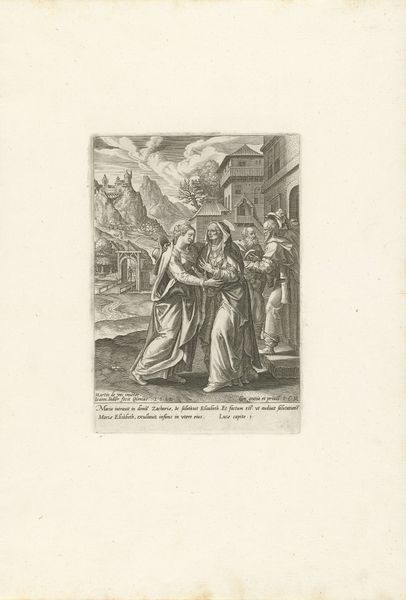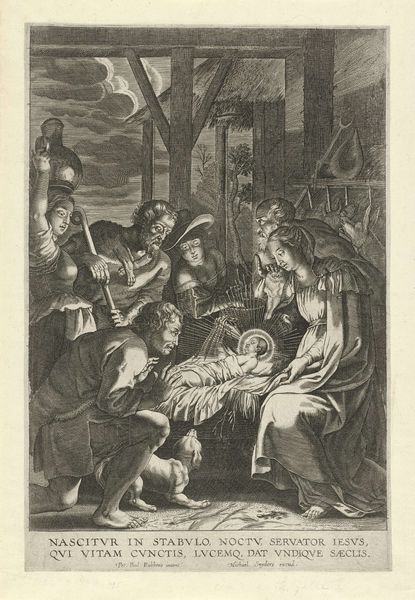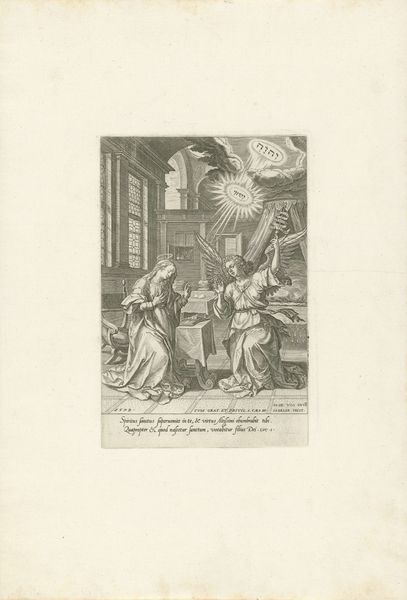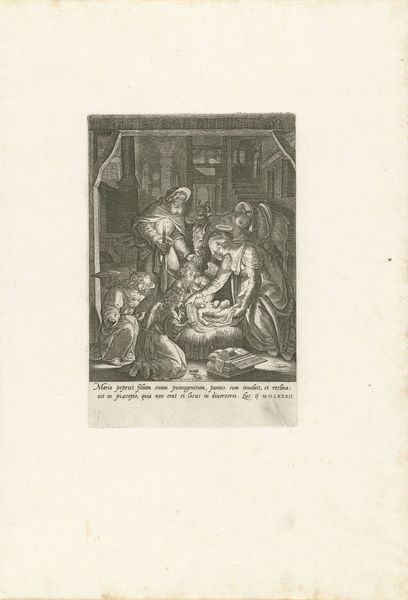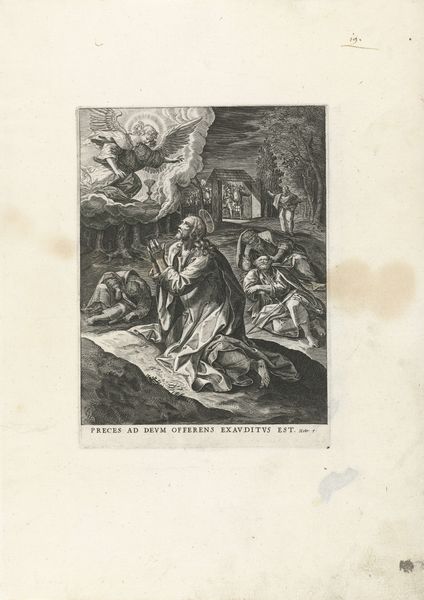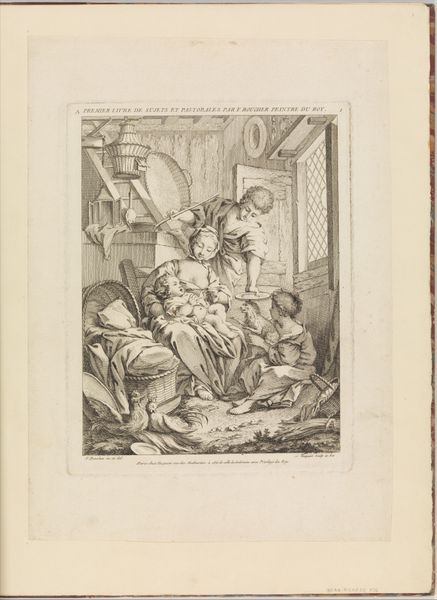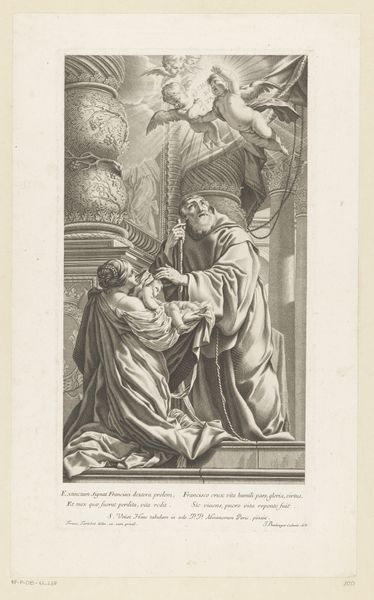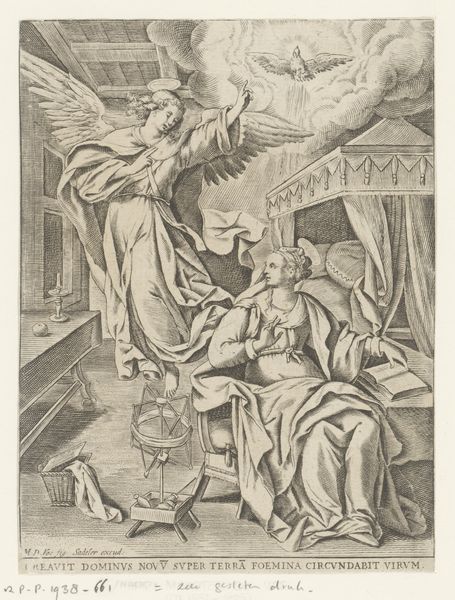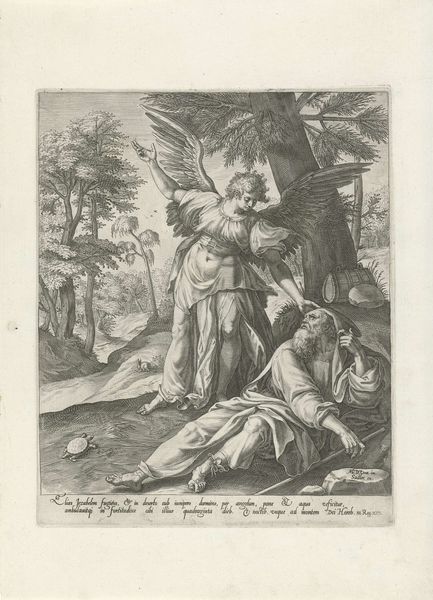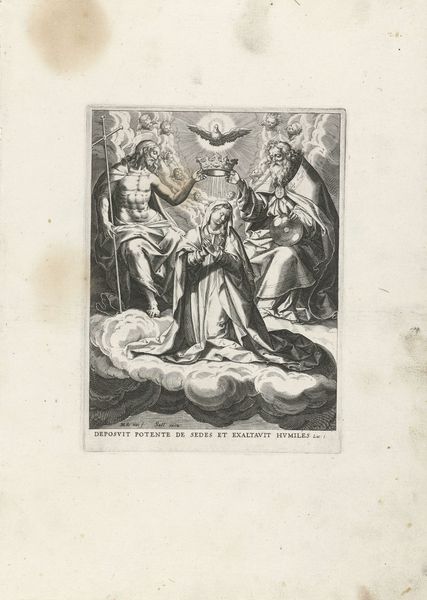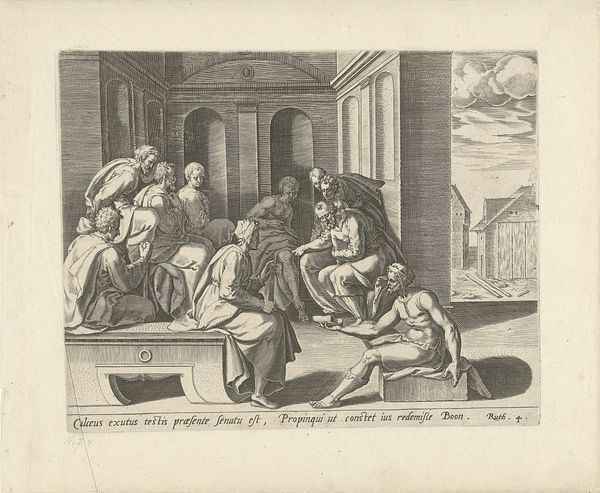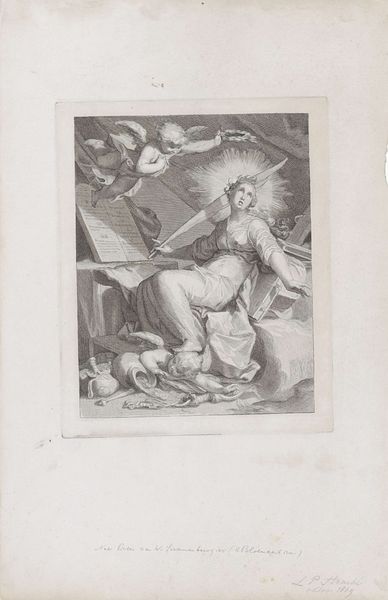
print, engraving
# print
#
figuration
#
history-painting
#
northern-renaissance
#
engraving
Dimensions: height 200 mm, width 145 mm
Copyright: Rijks Museum: Open Domain
Curator: This engraving, titled "Annunciation," was created between 1587 and 1589 by Johann Sadeler I and is currently held at the Rijksmuseum. Editor: The contrast between the angel, billowing fabrics, and the solid bed is striking, along with Mary’s pose – simultaneously regal and yielding. There is almost too much information to comprehend, the image seems to fight against itself. Curator: Let’s not forget that prints like this played a critical role in disseminating religious imagery and artistic styles during the Northern Renaissance. The lines are precise, showcasing Sadeler's mastery of the engraving technique and appealing to the tastes of the educated bourgeois interested in fine detailing and biblical subject matter. How do you think its context of creation would effect the reading of the image by contemporaries? Editor: This imagery clearly serves institutional purposes. Prints like this reinforced theological narratives—not just disseminating them. I find myself wondering about the role images like this played in dictating accepted gender roles for those who viewed them. But beyond this print itself, where were pieces like this commonly viewed or circulated at the time, and how did this inform their interpretations? Curator: A key element to understanding pieces like this comes down to the process of production and its market. We see, as evidenced by the presence of the Latin inscription, this piece was intended to circulate to a broad educated audience beyond local language speakers, demonstrating an effort to enter an international art market. It's not just about subject matter, but the intentional creation of a commodity. Editor: So we’re not only seeing an Annunciation but a carefully constructed representation made possible through workshops, market forces, and its social currency in its historical moment. I wonder about the reception it received given all the labor involved, the socio-religious dialogue it spurred. Curator: Exactly, and appreciating that helps us better understand the layers of meaning imbued in this print and others from the era. Considering its place as both object and representation allows for greater insight. Editor: Understanding art like this isn't just about aesthetic appreciation, but about critically engaging with how images were used to shape societal views. A very helpful thing to keep in mind when considering older artwork like this!
Comments
No comments
Be the first to comment and join the conversation on the ultimate creative platform.
